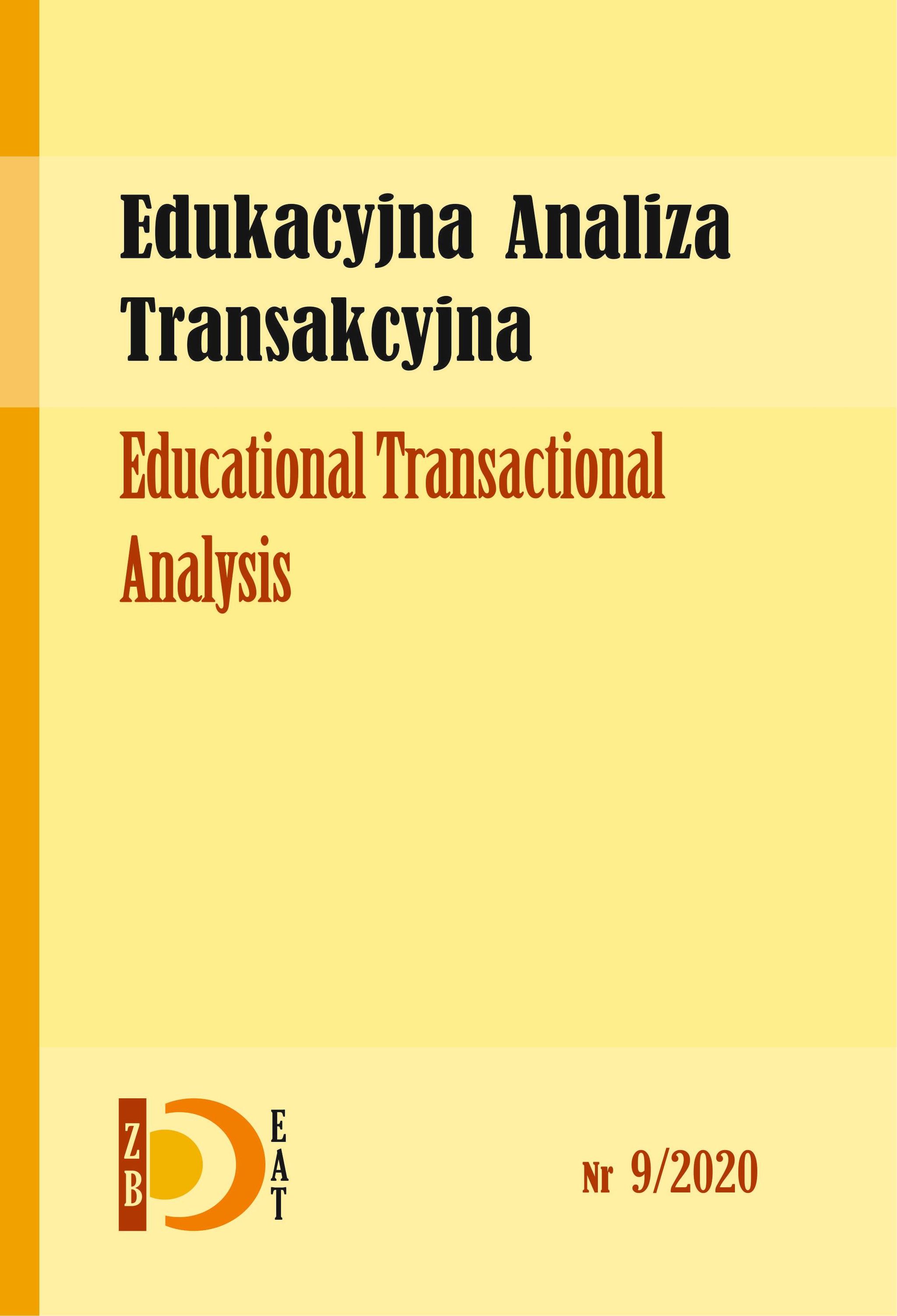Personal and social dimensions of the theatrical activity of people with autism spectrum on the example of the ‘Authentic Artists’ theater group
DOI:
https://doi.org/10.16926/eat.2020.09.17Keywords:
Autism Spectrum, creativity, theatre, emancipationAbstract
The theater, in which the actors are people with autism spectrum, has not yet been researched extensively. Most of the texts consider the therapeutic contexts of theatrical activity performed by people with autism spectrum, or even interventions against them using theatrical techniques. In this article, the author looks for a different perspective on the phenomenon of theater activities performed by people with autism spectrum. The presented research was aimed at showing the activities of "Authentic Artists" theater in two dimensions: personal and social. The research method used was a qualitative study of an individual case, which was the theater group of people with autism spectrum "Authentic Artists" from Łódź. The research showed that theatrical activity can be a source of personal satisfaction and fulfillment for people with autism spectrum. The theater also turned out to be a place to establish relationships and make friends. It has been shown that the activity of "Authentic Artists" has also an emancipatory potential, being a space for searching for their own forms of identity and creativity
Downloads
References
APA (2013). Diagnostic and Statistical Manual of Mental Disorders (5th ed.) Arlington: American Psychiatric Association.
Baro, T. (2006). Teatr-terapeutyczny ekran. W: I. Jajte-Lewkowicz, A. Piasecka (red.), Terapia i teatr. Wokół problematyki teatru ludzi niepełnosprawnych. Łódź: Poleski Ośrodek Sztuki.
Corbett, B. A., Gunther, J. R., Comins, D., Price, J., Ryan, N., Simon, D., ... & Rios, T. (2011). Brief report: theatre as therapy for children with autism spectrum disorder. Journal of autism and developmental disorders, 41(4), 505-511. DOI 10.1007/s10803-010-1064-1.
Corbett, B. A., Key, A. P., Qualls, L., Fecteau, S., Newsom, C., Coke, C., & Yoder, P. (2016). Improvement in social competence using a randomized trial of a theatre intervention for children with autism spectrum disorder. Journal of autism and developmental disorders, 46(2), 658-672. DOI 10.1007/s10803-015-2600-9.
Dąbek, A. (2017). Potraktowaliśmy siebie poważnie (Michał Borczuch w rozmowie z Agatą Dąbek o spektaklu Paradiso. W: E. Godlewska-Byliniak (red.). Odzyskiwanie niepełnosprawności. Niepełnosprawność w teatrze i performansie. Warszawa: Fundacja Teatr 21.
Dykcik,W. (1999). Pedagogika specjalna w sytuacji aktualnych zagrożeń i wyzwań. W: W. Dykcik, J. Pańczyk (red.), Pedagogika specjalna w sytuacji aktualnych zagrożeń i wyzwań XXI wieku, Poznań: Wydawnictwo UAM.
Godlewska-Byliniak, E., Lipko-Konieczna, J. (red.) (2016). 21 myśli o teatrze, Warszawa. Fundacja Win-Win.
Golka, M. (2008). Socjologia sztuki, Warszawa: Difin.
Jajte-Lewkowicz, I. (2006). Słowo wstępne. W: I. Jajte-Lewkowicz, A. Piasecka (red.), Terapia i teatr. Wokół problematyki teatru ludzi niepełnosprawnych. Łódź: Poleski Ośrodek Sztuki.
Kim, A. J., Stembridge, S., Lawrence, C., Torres, V., Miodrag, N., Lee, J., & Boynes, D. (2015). Neurodiversity on the stage: The effects of inclusive theatre on youth with autism. International Journal of Education and Social Science, 2(9), 27-39.
Krakowska, J. (2016). Auto-teatr w czasach post-prawdy. Dwutygodnik, 9. http://www.dwutygodnik.com/artykul/ 6756-auto-teatr-w-czasach-post-prawdy.html Pobrane 20 listopada 2020.
Krasoń, K., Mazepa-Domagała, B. (2003). Przestrzenie sztuki dziecka. Strategie intersemiotycznego i polisensorycznego wsparcia osób o obniżonej sprawności intelektualnej. Katowice: Librus.
Ławicka, J. (2019). Człowiek w spektrum autyzmu. Podręcznik pedagogiki empatycznej. Opole: Wydawnictwo i Drukarnia Świętego Krzyża.
May, S. (2017). Autism and comedy: using theatre workshops to explore humour with adolescents on the spectrum. Research in Drama Education: The Journal of Applied Theatre and Performance, 22(3), 436-445. DOI 10.1080/13569783.2017.1329651.
Ogrodzka, D. (2016). Pedagogika teatru jako sztuka, Dialog, 7-8.
Płatos, M. (2018). Autyzm odcieleśniony. Historia społecznego konstruowania autyzmu jako choroby, zaburzenia i niepełnosprawności. Annales Universitatis Paedagogicae Cracoviensis| Studia de Cultura, 10(252), 100-112. DOI 10.24917/20837275.10.1.8
Rynkiewicz, A., Janas-Kozik, M., & Słopień, A. (2019). Dziewczęta i kobiety z autyzmem. Psychiatria Polska, 53(4), 737-752.DOI: 10.12740/PP/OnlineFirst/95098.
Rzeźnicka-Krupa, J. (2009). Niepełnosprawność i świat społeczny. Kraków: Oficyna Wydawnicza Impuls.
Rzeźnicka-Krupa, J. (2016). Sztuka zaangażowana: społeczno-kulturowe aspekty dorosłości osób z niepełnosprawnością w kontekście projektu „Więcej niż teatr” Instytutu im. Jerzego Grotowskiego we Wrocławiu. Niepełnosprawność, 2016(24 (2016)), 96-113.
Sobczyk, J., Hasiuk, M. (2016), Więcej niż teatr. Archipelag wysp (plik pdf). http://www.grotowski-institute.art.pl Pobrane 20 listopada 2020.
Stake, R.E. (2009). Jakościowe studium przypadku. W: N.K. Denzin, Y.S. Lin- coln (red.), Metody badań jakościowych, t. 1. Warszawa: Wydawnictwo Naukowe PWN.
Stefańska, A. (2011). Teatr uwarunkowany osobą. W: B. Cytowska (red.), Dorośli z niepełnosprawnością intelektualną w labiryntach codzienności. Analiza badań – krytyka podejść – propozycje rozwiązań. Toruń: Wydawnictwo Adam Marszałek. http://www.ostoja.org.pl/pliki/Cytowska_B.pdf. Pobrane 20 listopada 2020.
Śliwonik, L. (2006). Zamurowany. W: I. Jajte-Lewkowicz, A. Piasecka (red.), Terapia i teatr. Wokół problematyki teatru ludzi niepełnosprawnych. Łódź: Poleski Ośrodek Sztuki.
Wojciechowski, A. (2006). Piękno osoby niepełnosprawnej. W: I. Jajte-Lewkowicz, A. Piasecka (red.), Terapia i teatr. Wokół problematyki teatru ludzi niepełnosprawnych. Łódź: Poleski Ośrodek Sztuki.
Zięba, R. (2006). Milczenie ciała (szkic). W: I. Jajte-Lewkowicz, A. Piasecka (red.), Terapia i teatr. Wokół problematyki teatru ludzi niepełnosprawnych. Łódź: Poleski Ośrodek Sztuki.
Downloads
Published
How to Cite
Issue
Section
License
Copyright (c) 2021 Sabina Pawlik

This work is licensed under a Creative Commons Attribution 4.0 International License.
I am aware that the Educational Transactional Analysis journal is published under a Creative Commons license - Attribution (https://creativecommons.org/licenses/by/4.0/legalcode).
By submitting the article, I agree to make it available under this license

